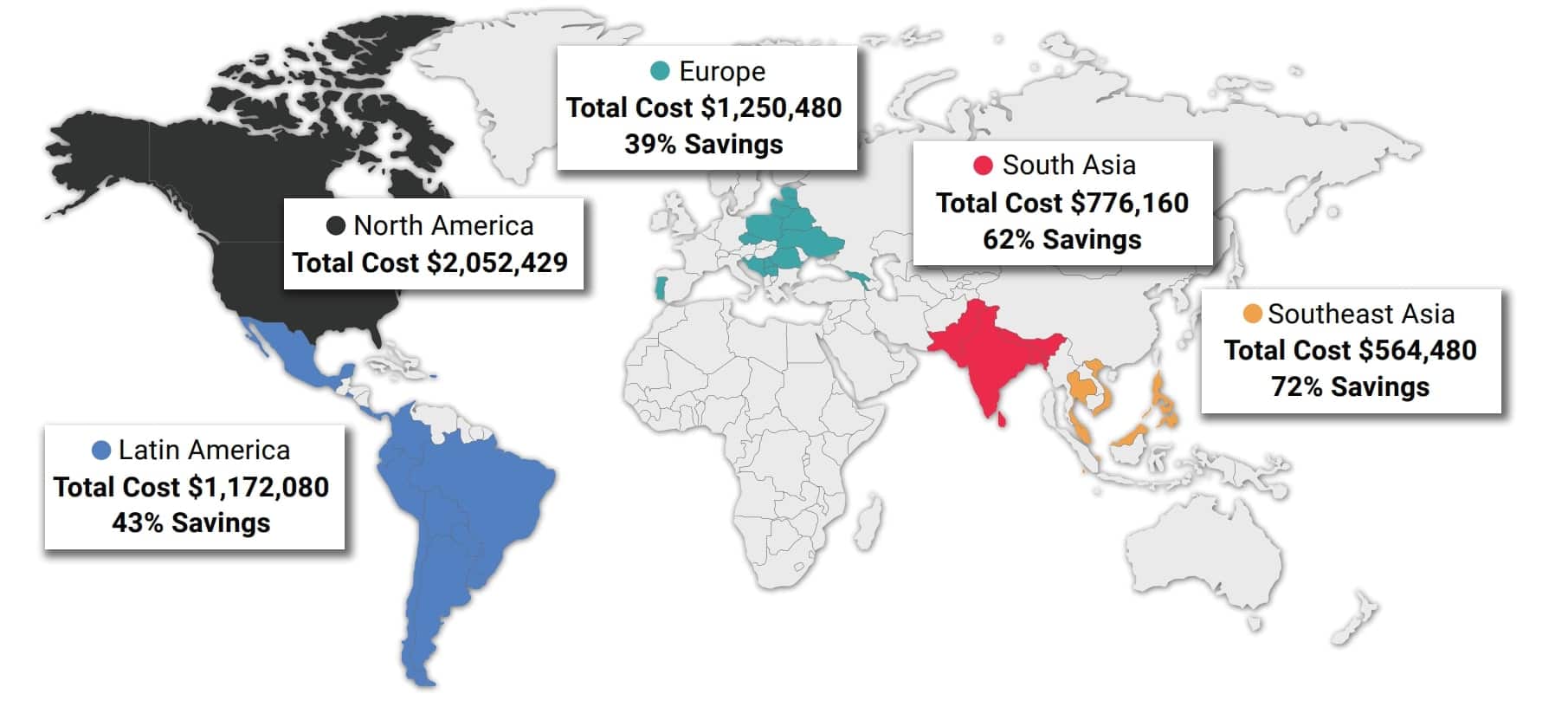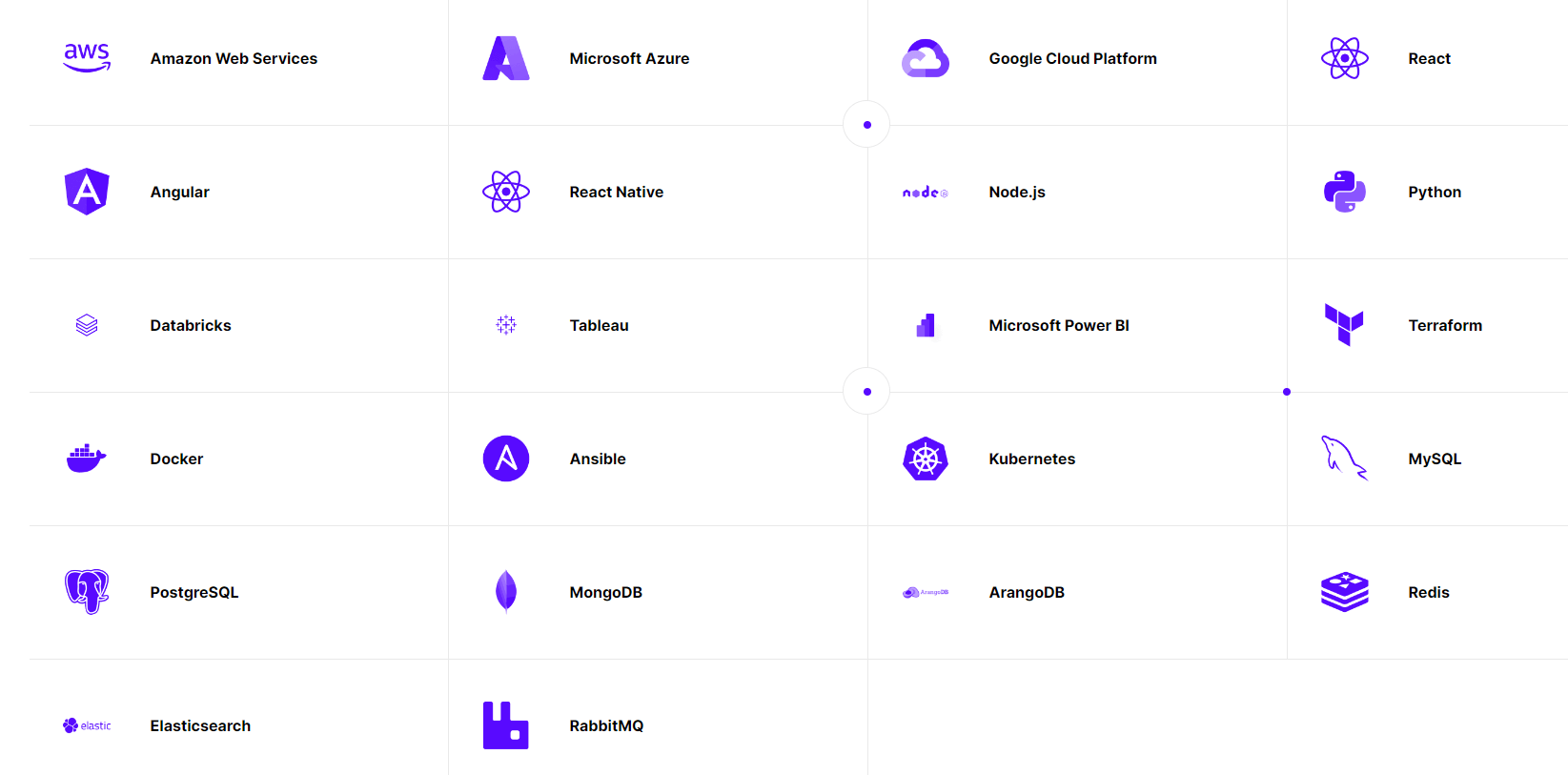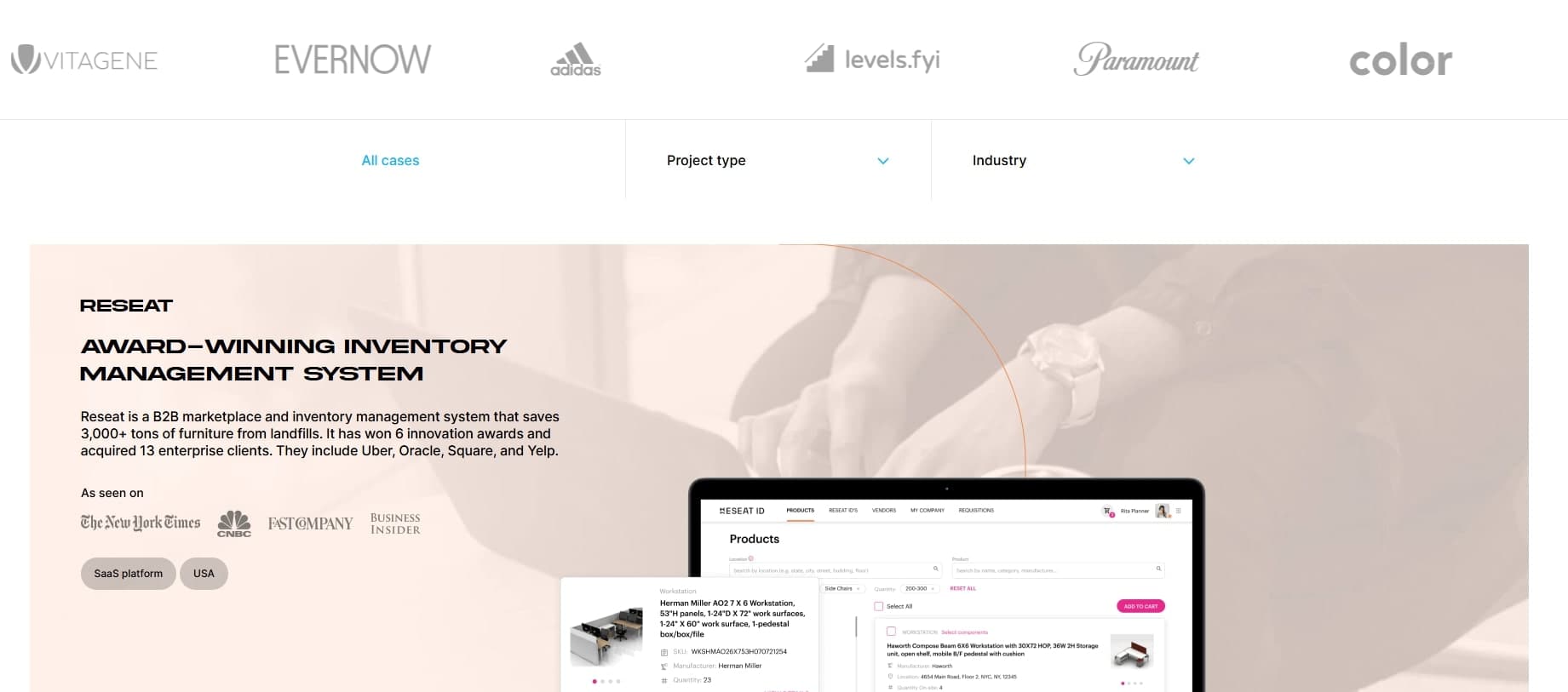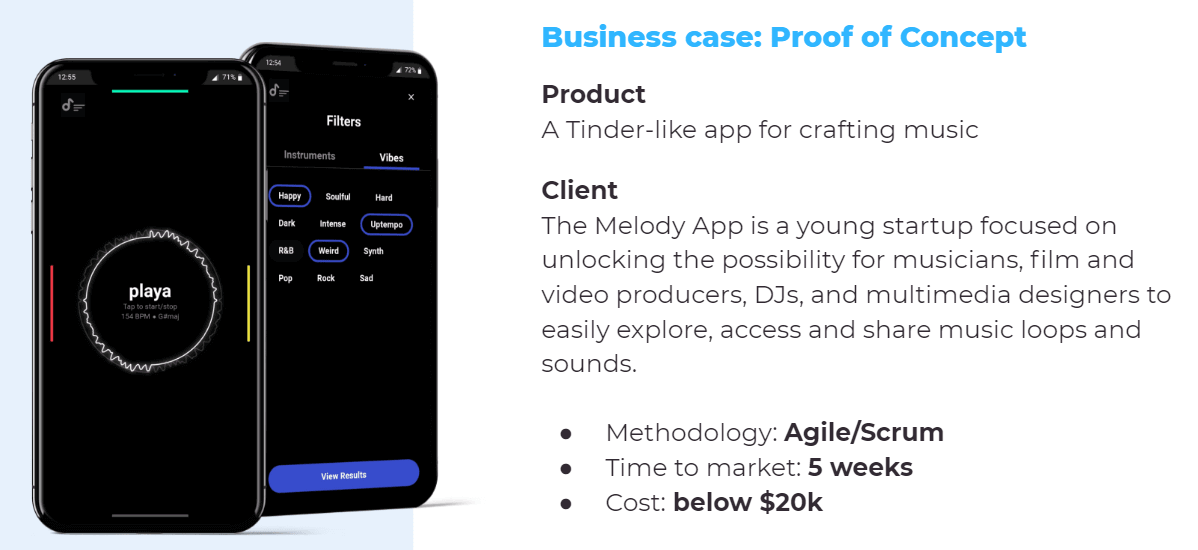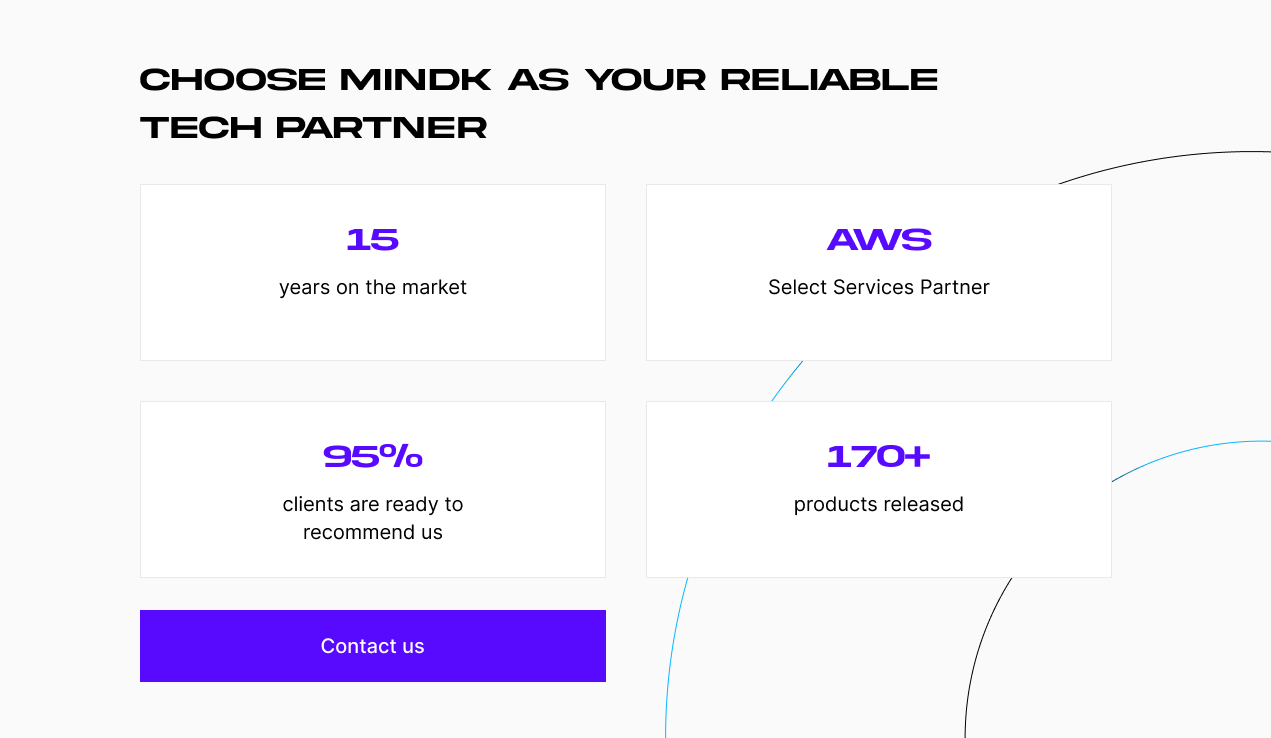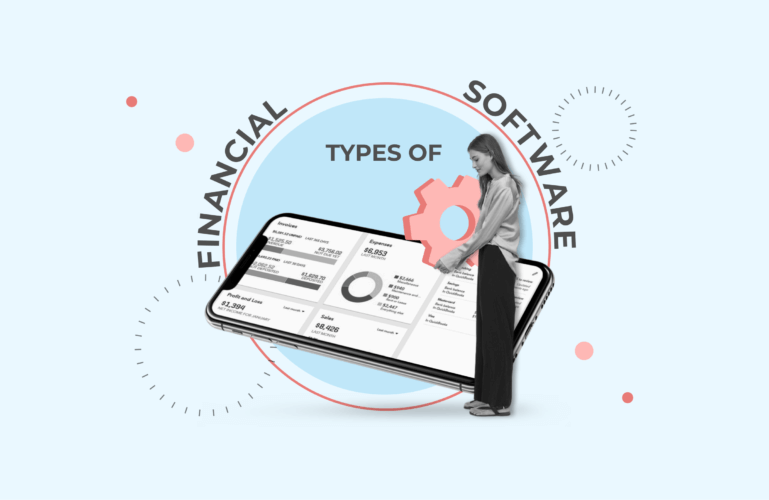Want to outsource web development? But still, there’s a nagging feeling. I’ve heard so many horror stories from my clients and associates in the tech industry: misplaced trust, blown deadlines, and wasted budgets.
In fact, when I founded MindK fifteen years ago, one of my first clients happened to be a US construction executive recovering from multiple failed attempts at outsourcing. His software was a mess of spaghetti code with millions of lines that did nothing of use.
The industry has matured greatly since then. Yet, outsourcing web development remains a risky decision. Our team at MindK has analyzed the latest data in an attempt to define the common traits in failed and successful outsourcing projects.
The result is a step-by-step guide you can use to decide whether outsourcing is the right choice for your company, selecting the best outsourcing strategy, and a web development partner worthy of your trust.
However, kickstarting a project is only half of the job. I sat down with our project management team to collect the best advice on how to ensure long-term success in outsourcing web development.
Why you shouldn’t outsource web development
Software development is a complex endeavor. 43% of all projects – both outsourced and in-house – end up as a failure.
- 2/3 of all outsourced web development fails relate to cost overruns or delays.
- This points to poor risk mitigation – a thought echoed by 70% of the surveyed.
- 56% of all failures can be traced to the project scope. These issues result from both poor estimations and change management.
- Lack of stakeholder engagement, evident in 53% of projects, is another contributor.
- 19% of initiatives broke down due to the lack of sponsor buy-in and involvement.
As you can see, most failed projects start with a poor understanding of the customer’s goals, inaccurate estimates, and incomplete risk identification. These issues can worsen without good change management, communication, and stakeholder involvement.
In my experience, there are four major risks of outsourcing that need to be mitigated for the project to become successful:
- Loss of control over the project. It’s natural to fear that the end result will stray from the original vision, that the decisions of others will lead to the failure of your idea. After all, its future depends on the people who were never a part of your team.
- Potential delays and cost overruns. According to different sources, an average IT project has a cost overrun of 27%—45%. The risk is even higher if an outsourcing partner sends unrealistic estimates, makes big promises, and refuses to provide a detailed contract.
- Confidentiality issues. Sharing your ideas, proprietary tech, or access to internal systems is always risky. It requires a lot of trust built up gradually.
- Language barriers and communication gaps. Offshore teams come from a different culture and business environment. Poor English is frustrating to deal with, and over time, it may contribute to failure.
Benefits of outsourcing web development
Software development projects are inherently risky. Top outsourcing vendors have been successfully handling these risks for decades. This means you might expect several key benefits of outsourcing web development:
- Vast product development expertise. A single person can never match the experience of an entire company that has been making digital products for more than a decade. Top outsourcing vendors have excellent processes that are hard to replicate for a new startup or legacy business. They have experienced teams that can assist with market research, monetization strategies, product design, and optimization of all types.
- Extra time for your priorities. All of us, at some point, wanted an extra couple of hours a day for all the tasks needing attention. Outsourcing buys you those extra hours. Some use it to free up the best engineers for a promising new project. Others focus on what they know the best—growing the business and client base.
- Easy scaling. Hiring an outsourcing company allows you to get from an idea to a working product much faster than building an exceptional team from the ground up. A tech partner can also quickly expand the team when needed with in-house engineers.
- Long-term support. Companies like MindK strive to build lasting relationships with their clients. On average, we keep supporting a project for five years with regular patches and improvements.
- Cost savings. According to 2024 Global Outsourcing Rates and Trends, companies that outsource web programming save between 39% and 72%, depending on the region.
Potential savings from outsourcing web development to various regions
Source: Accelerance
Now that you know all the drawbacks and benefits of outsourcing web development, it’s time to share the recipe for maximizing your chances of success.
And the fist step is to choose a strategy the most sense for your business.
Select the right strategy for outsourcing web development
Choosing the right engagement model can make or break an outsourced project. This choice will depend on your project scope, timeframe, budget, available in-house resources, and the level of your personal involvement.
Make sure your tech partner offers various engagement options to fit your project needs and requirements. To pick an optimal model, consider the project scope, timeframe, the budget you can spend, available resources, and the level of your personal involvement.
Team augmentation (outstaffing)
What it means: quickly fill specific positions with remote employees matched to your requirements. Retain full control over the project as there are no middlemen between developers and the client.
When to use: team augmentation is an ideal option for companies that already have an in-house team they need to quickly bolster with specific skills.
Example: Yokoy is a Swiss FinTech with over $100 million in funding. It needed an experienced DevOps engineer to facilitate the migration from GCP to Microsoft Azure. Such resources are hard to find locally. Yokoy hired an outsourced specialist for six months to recreate the infrastructure and automate deployments.
| Team augmentation | |
| Vendor | Client |
|
|
Traditional outsourcing
What it means: hire a well-coordinated team of specialists to cover all needs on a specific project. Such a project can be developing a new product, improving the existing one, or implementing a digital transformation.
When to use: you have no in-house developers or want to focus on other projects and elements of company growth.
Example: CEMAsys ,one of the world’s leading Corporate Social Responsibility companies, started a web development partnership with MindK 12 years ago. Since then, the remote team has become an integral part of the client’s business.
| Project outsourcing | |
| Vendor | Client |
|
|
Product-led outsourcing
What it means: design, develop, and iterate on a new product with a trusted partner. This strategy differs from traditional outsourcing in one main way. The vendor doesn’t only focus on execution but also assists with market research, user-centered design, and team mentorship.
The partner shares responsibility for your success.
When to use: you have no well-defined delivery processes but want to make product-led growth the focal point of your business.
Example: The Melody App started as a brainchild of Grammy-winning producers. MindK helped them get the initial funding with proof of concept for the easy creation of music samples. The team shared responsibility for market analysis and strategy, while the engineers developed two fully functional apps for iOS and Android.
Other strategies
These are the less common strategies and niche tactics used by some businesses:
- Outcome-based pricing. Instead of paying by the hour, you might want to pay for specific outcomes or performance metrics. This incentivizes vendors to deliver efficiently.
- Micro-sourcing. Some businesses might break the project into smaller, independent tasks and outsource to them specialist studios. For example, you may outsource web design to a premium US studio while using another vendor for full-stack development outsourcing. Working with multiple vendors diversifies risks.
- Dedicated offshore development centers (DDC). Web development outsourcing companies can allocate a permanent team to your projects. This gives you consistency and deep domain knowledge over time.
- Managed service providers (MSP). For an extra fee, an MSP can manage the entire process, from vendor selection to quality assurance and risk mitigation.
- Blockchain-based agreements. Although using smart contracts to automate payments based on milestones hasn’t yet entered the mainstream, it might one day become the norm.
Once you understand which strategy makes the most sense for the project, you can start searching for an outsourcing company worthy of your time.
Choose a reliable web development partner
The success of your web project depends a lot on the development company you decide to hire. Here’s how to make the right choice.
#1 Find vendors with the expertise you need
Unless you already have a trusted company in mind, do your homework. For instance, if you need to build medical software, look for companies that work with your niche or the desired tech stack.
Olga Nazarenko, Head of Delivery at MindK, says: “If I were to select a partner for my next project, the first thing I would consider is expertise in my domain. Then, I’d look at the customer reviews. Is it possible to contact those people on LinkedIn? As a person with a background in engineering, I’d also look at the vendor’s tech stack. Are these technologies easy to support in the future? I’d then set up a meeting with the team to assess their processes and tech skills.”
The MindK tech stack
#2 Read client reviews
Study company sites in detail ‒ make sure it contains case studies and feedback from previous clients. Independent review platforms like Clutch are another valuable tool at this stage. They provide extensive information about web development companies, including client reviews and ratings.
#3 Send out an RFI
Requests for Information (RFI) provide a structured way to assess the vendor landscape at early stages. This is a helpful tool for narrowing down the list of qualified web development companies. An RFP doesn’t have to follow one fixed structure as it has these key elements:
- Company overview: what is the vendor’s history, size, industry expertise, and certifications?
- Core competencies: can they detail technical skills, tools, and methodologies?
- Previous projects: can they provide examples of similar work?
- Resources and capacity: what are the team size, availability, and options for larger projects?
- Risk management: how did they handle risks, scope changes, and unforeseen delays in past projects?
- Cultural fit: what are their values and communication practices in different time zones?
You might also ask about non-technical offerings like project management or ask the vendor to share a client retention rate. High retention rates indicate trustworthiness and strong client satisfaction.
#4 Assess their development process
After shortlisting vendors with an RFI, collect detailed proposals using an RFP (Request for Proposal). This is a more detailed document, tailored to your specific situation and business requirements.
- Project overview: a clear description of the project, goals, and the problem you’re trying to solve.
- Technical requirements: specific technologies, frameworks, integrations, and platforms required.
- Timeline and milestones: key deliverables and dates.
- Evaluation criteria: how you’ll evaluate proposals (e.g., technical expertise, pricing, previous experience).
- Deliverables: ask for detailed project plans, team compositions for each phase of the project, and budget estimates.
- Long-term support: inquire about the ability to provide ongoing maintenance, updates, and scalability options post-launch.
- Security and compliance plan: outsourcing companies should detail how they handle data security and comply with regulations like HIPAA or GDPR.
- Questions for vendors on methodology, quality assurance, scalability, and communication.
You might also add a “reverse pitch” section. It provides an opportunity to suggest improvements or alternative solutions to your challenges.
Once the vendors send the proposals, add them to a single evaluation table. Each criterion can have a different weight depending on your priorities (e.g., technical expertise = 40%, cost = 20%, timeline = 20%, communication = 20%). Kate Paliuta, our Lead Business Analyst, says: “It’s tempting to evaluate bids based on a price tag. However, this only makes sense in an apple-to-apple comparison. A $1,000,000 bid might propose a very different solution than a $100,000 bid. A more expensive solution might actually be more profitable in the long run if it’s more secure, scalable, and easy to upgrade. So, make sure not to compare apples to a picture of AI-generated oranges.”
Download a customizable RFI / RFP template for web development
#5 Talk to the team
Once you’ve picked some good vendors, set up a call to ask questions related to their development process. Ask how they manage projects. What procedures do they use for effective communication? How do they control the quality of deliveries? Do they provide support after the release, including updates and bug fixing?
In meetings like these, it’s important that you’re not the only one asking questions. When talking to founders who outsource web programming, I often hear the vendor’s ability to listen attentively and ask the right questions is one of the key soft skills they look for.
Red flags to watch out for when outsourcing web development
Budget overruns, poor code quality, missed deadlines, misunderstandings, and failed launches can all stem from these issues. Watch out for these red flags if you want to outsource web app development.
🚩Suspiciously low pricing
Skilled engineers will never work for a company that pays pennies. A dishonest vendor might hide some fees or risk budget overruns, so it’s a good idea to ask for a detailed breakdown of project costs.
Web development company outsourcing may involve different pricing models. However, they mostly fall into two types:
- Fixed price – the full project cost is defined beforehand according to requirements that are unlikely to change.
- Time & material – pay an hourly rate based on the work done and resources used.
So, getting familiar with the main pricing models is a good practice.
Check out our in-depth guide on web development costs for more detail
🚩Lack of transparency
In my experience two main factors contribute to success in outsourcing web development: transparency and care. Everything else is secondary. So, take note when the company is elusive about its processes, timelines, or pricing during negotiations.
This might be a sign of darker things to come.
Transparency is even more important later on. An outsourcing vendor should provide regular progress reports, status updates, and product demos. This allows you to understand what is going on with your project, how the budget is being spent, the difficulties that appear along the way, and when to expect results.
🚩Communication issues
This is one of the common causes of failed projects. The team should work well together and be on the same page with the client. You shouldn’t be the only one initiating communication or creating all appointments, meetings, and checks.
You might fall in love with silver-tongued sales reps, but don’t hurry to sign a contract. It’s always a good idea to talk to the engineers first and ensure they have good English and aren’t afraid to speak up.
Finding programmers with excellent soft skills is always hard. It’s one of the main reasons why only 4 out of 100 qualified candidates pass MindK vetting. However, clients are much more satisfied when they can talk to engineers directly, which I encourage at every step.
🚩Lack of proven expertise
Someone who claims to be an expert in web development but doesn’t have a portfolio of high-quality work is suspicious, to say the least. Even if all the relevant projects fall under a strict NDA, an experienced vendor will demonstrate a deep knowledge of your domain and key technologies. For example, MindK filters case studies by project type and the client’s industry. If need be, we can also provide a technology-specific presentation.
Olga Nazarenko, our Head of Delivery at MindK, points out: “The biggest red flag for me is the yes-man vendor. They might have zero experience with your domain or tech stack. Yet, they would still say: “Yes, we can do it!”. An honest vendor would instead say: “We have a lot of experience with this part of your request. Here are the related case studies and client references. For the other part, we have no direct experience. However, here’s a preliminary analysis on how to do it.“”
🚩High employee turnover
This may indicate that the vendor doesn’t treat employees well or that there are underlying issues within the company culture. When barely a month passes before an engineer leaves your project, this paints a grim picture of its success. Expensive onboarding, lost knowledge, and poor morale are some of the issues caused by high turnover.
That’s why top outsourcing companies pay a lot of attention to keeping their engineers happy.
What to take care of at the beginning of the cooperation
A legally binding contract is essential to govern your relationships with a tech partner. A Service-Level Agreement (SLA) should specify fees, intellectual property rights, liabilities, penalties, warranties, compensations, and more. This prevents any misunderstandings between parties.
Here are six more tips I consider essential for outsourcing web development.
#1 Sign a confidentiality agreement
The easiest and the most common way to mitigate security risks is to sign a confidentiality agreement. A Non-Disclosure Agreement (NDA) protects the information you disclose during negotiations, meetings or the development process, as well as any work relating to the product, its future versions, or development process.
#2 Develop a risk management plan
Almost every web development outsourcing company claims they know how to manage risks. But only those who have actual risk-mitigation mechanisms are really putting customer interests first.
While choosing your future partner, think about the problems you might face during the development of your product and ask the outsourcing vendor if they have faced similar problems and how they managed them.
Don’t forget to ask if they conduct a risk analysis for every project to identify and manage risks.
#3 Set up communication channels
Vendors that care about trust will always update clients and inform them about any project issues. At MindK, we prefer to add clients to daily project management tools such as Jira and Trello, to show the progress and status of each task.
Before a project begins, we develop and ratify a communication plan with our client. This plan outlines the most convenient means of communication, the stakeholders responsible for different tasks and stages of the project, and how often we need to hold meetings and provide demos.
#4 Assign an internal decision-maker for your project
As a business owner, you already have many responsibilities. They might distract you from the development process. So the assignment of a Product Owner from your side is recommended for the project, to communicate requirements and coordinate processes with the team.
#5 Don’t think you can outsource your brain
Make sure that all your requirements are taken into account and documented thoroughly. High-quality documentation reduces labor intensity and the duration of your project’s development. Precise requirements allow developers to better assess the scope of work and budget accordingly.
#6 Get to know your team
It doesn’t matter if you are working with an in-house or an outsourcing team. For the whole project, you are one team.
Apart from online meetings, it would be good to meet with all team members in person or, at the very least, the project manager or business analyst. Personal meetings are required for long-term projects and dealing with complicated issues.
Since our company is focused on working with foreign customers, we frequently visit customer offices in the USA, Norway, and other countries. In the same vein, we invite clients to our R&D offices or set up meetings on neutral ground wherever convenient for the customer.
What happens next: how to ensure project success?
There are two ways to start a project when you outsource web development services.
#1 Don’t have detailed requirements? Start with product discovery!
🕜Duration: up to 5 weeks
🧑💻Participants: Business Analyst, Software Architect, UI/UX designer, Product Manager.
Many clients have rather vague requirements when searching for an IT vendor. This can lead to all sorts of problems. Unrealistic expectations, lack of direction, frequent changes, missed deadlines, and exceeded budgets undermine even the greatest of ideas.
Fortunately, you can prevent these issues with a product discovery phase. It includes a series of workshops that help you define the product goals, uncover the deepest user needs, and set clear success metrics. More importantly, it can turn them into precise specifications for the future product.
📌Deliverables: Detailed cost estimate, user personas, product roadmap, high-fidelity wireframes or interactive prototype, solution specification.
#2 Know exactly what you want? Start with MVP!
🕜Duration: 5 weeks – 1 year
🧑💻Participants: Project Manager, Business Analyst, Web Developers, QA Experts, UI/UX Designer (optional), DevOps Engineer (optional).
A Minimum Viable Product (MVP) is software with just enough features to delight early adopters and collect real feedback. This helps minimize risks, validate demand for your product, save costs, and secure future success.
📌Deliverables: fully functional product, comprehensive test result reports, server setup.
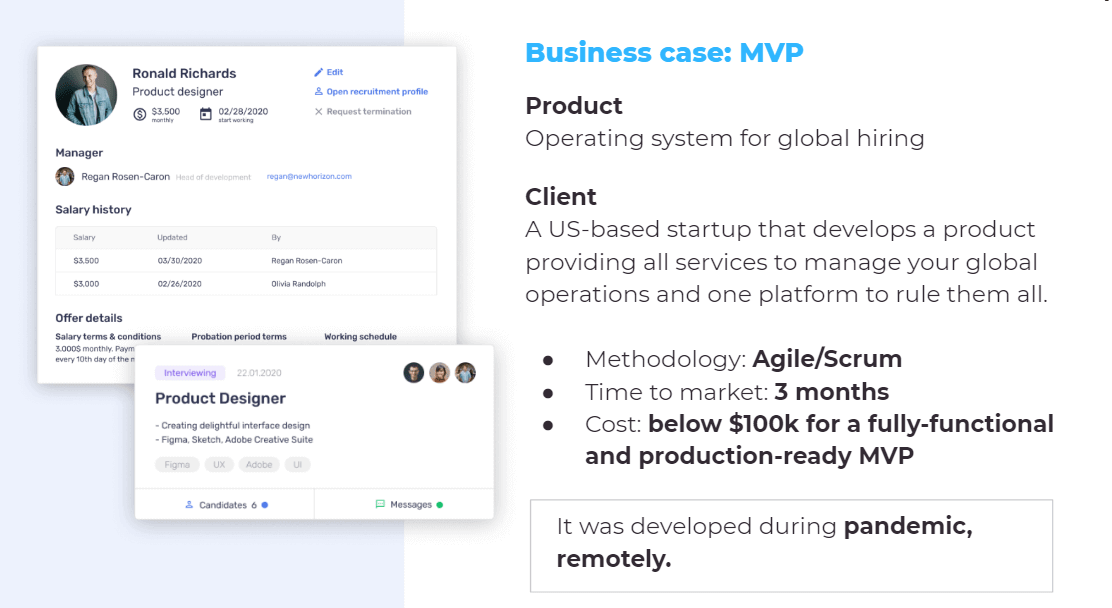
#3 Follow the development process
A hands-off approach often leads to a product that doesn’t meet expectations. Asking questions, providing feedback, and participating in the process can eliminate this risk. This way, you always have a clear picture of the product state and further steps required.
This rule applies to the agency. If they want to understand your business and build a valuable product, they should ask a lot of questions.
#4 Prevent problems before they arise
In any working process, there are always conflicts and disputes in need of extinguishing. Here are some of the best practices in dispute management:
- Check whether your project manager keeps you informed about what is happening at every stage of product development.
- Make sure the vendor has regular code review and QA processes.
- Be aware that if the agency actually makes a mistake, they should hold up their hands, explain the reasons, and suggest the recovery plan — demand all these things!
#5 Take care of the product post-release
Finishing the development doesn’t always mean ending the collaboration. So make sure you keep the agency close at hand—you might try outsourcing web development services again in the future.
Meanwhile, check whether the code is well-documented and has been handed over to your internal team. If needed, ask about maintenance and support for your product.
Conclusion
Now you have a handy guide on how to outsource web development. Selecting a tech partner is not a decision to be made hastily. So take your time, double-check the references, read the case studies, and make sure to meet the team in person. Ask as many questions as necessary to choose a dependable and skilled web development outsourcing company.
MindK has been working with enterprises, startups, and scale-up companies since 2009. If you have a project in mind, we’ll gladly discuss it to see if MindK is a good fit. Feel free to contact us.

